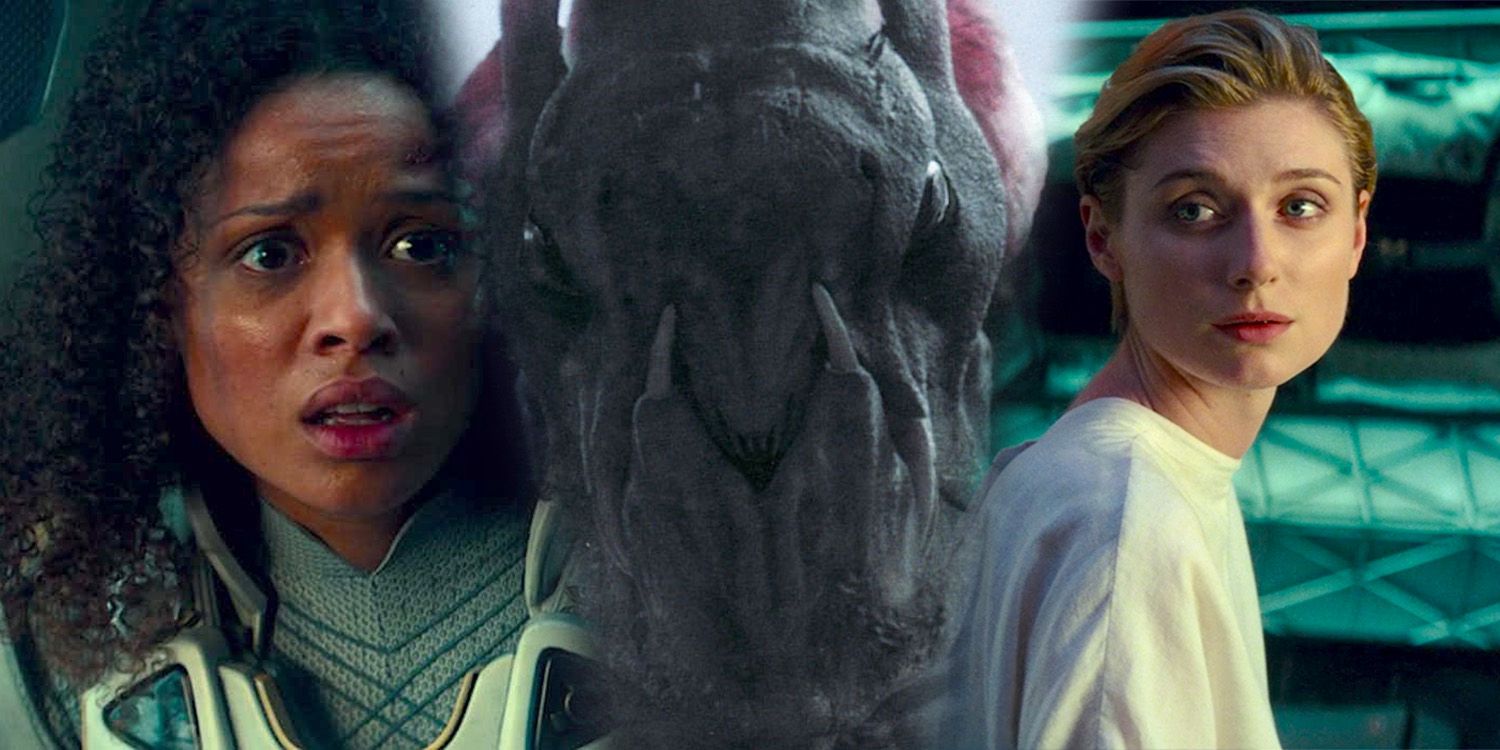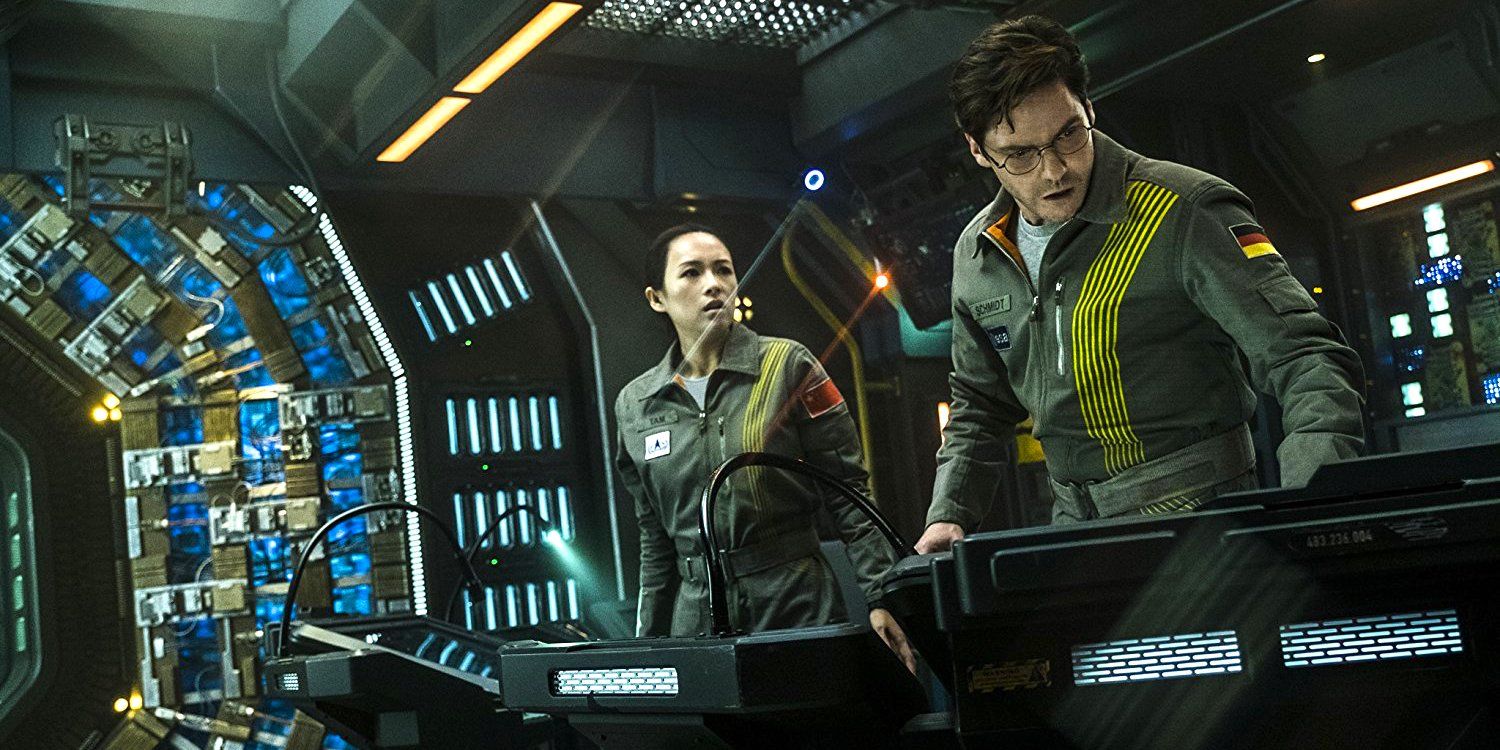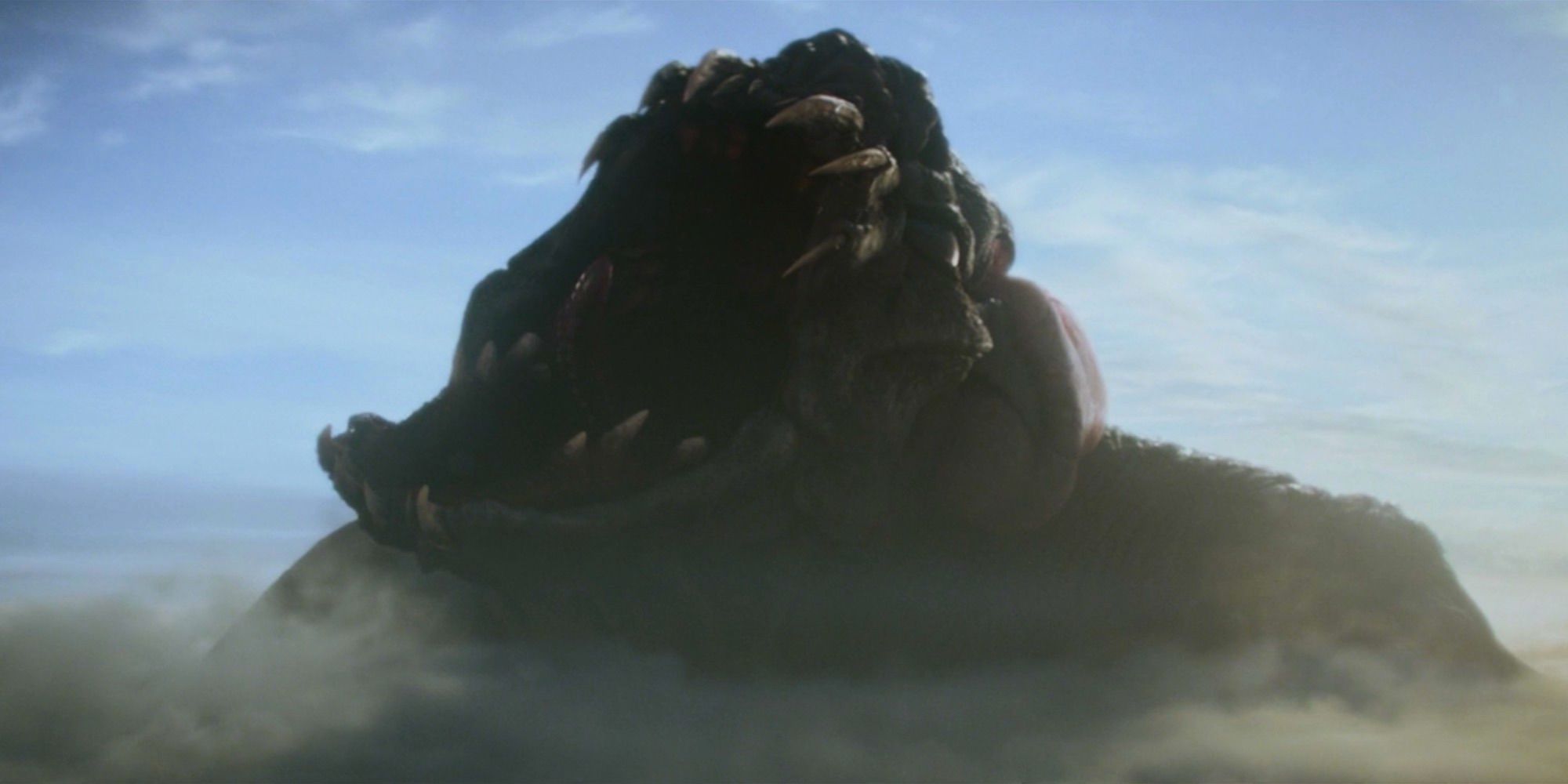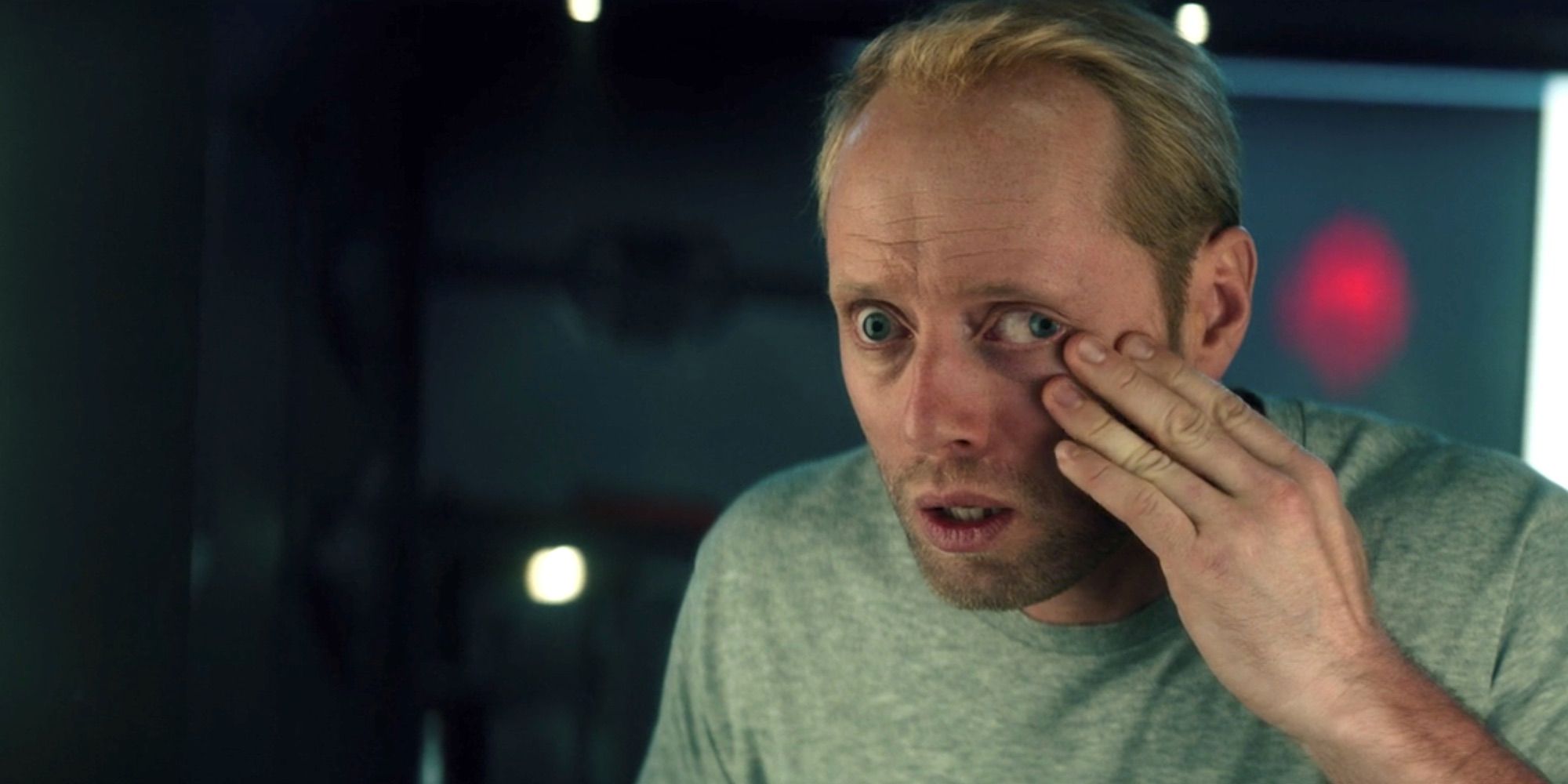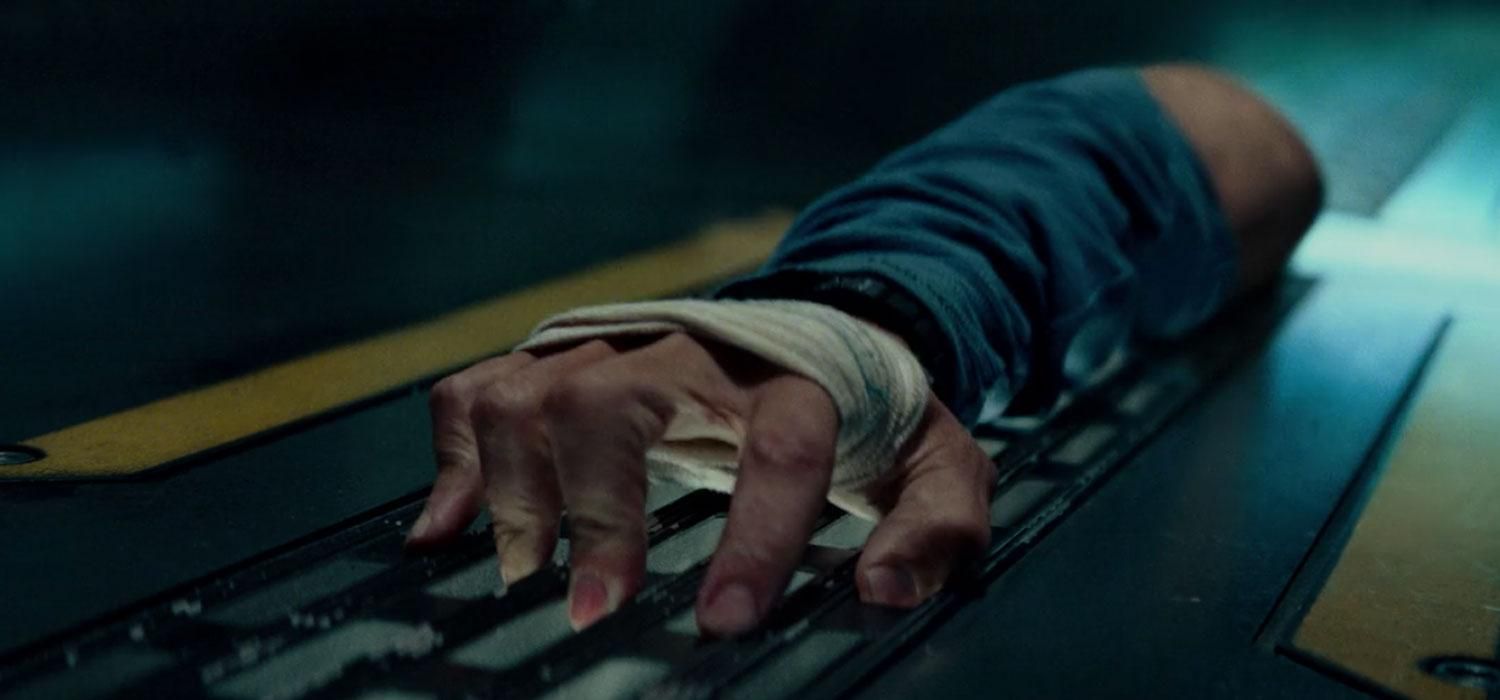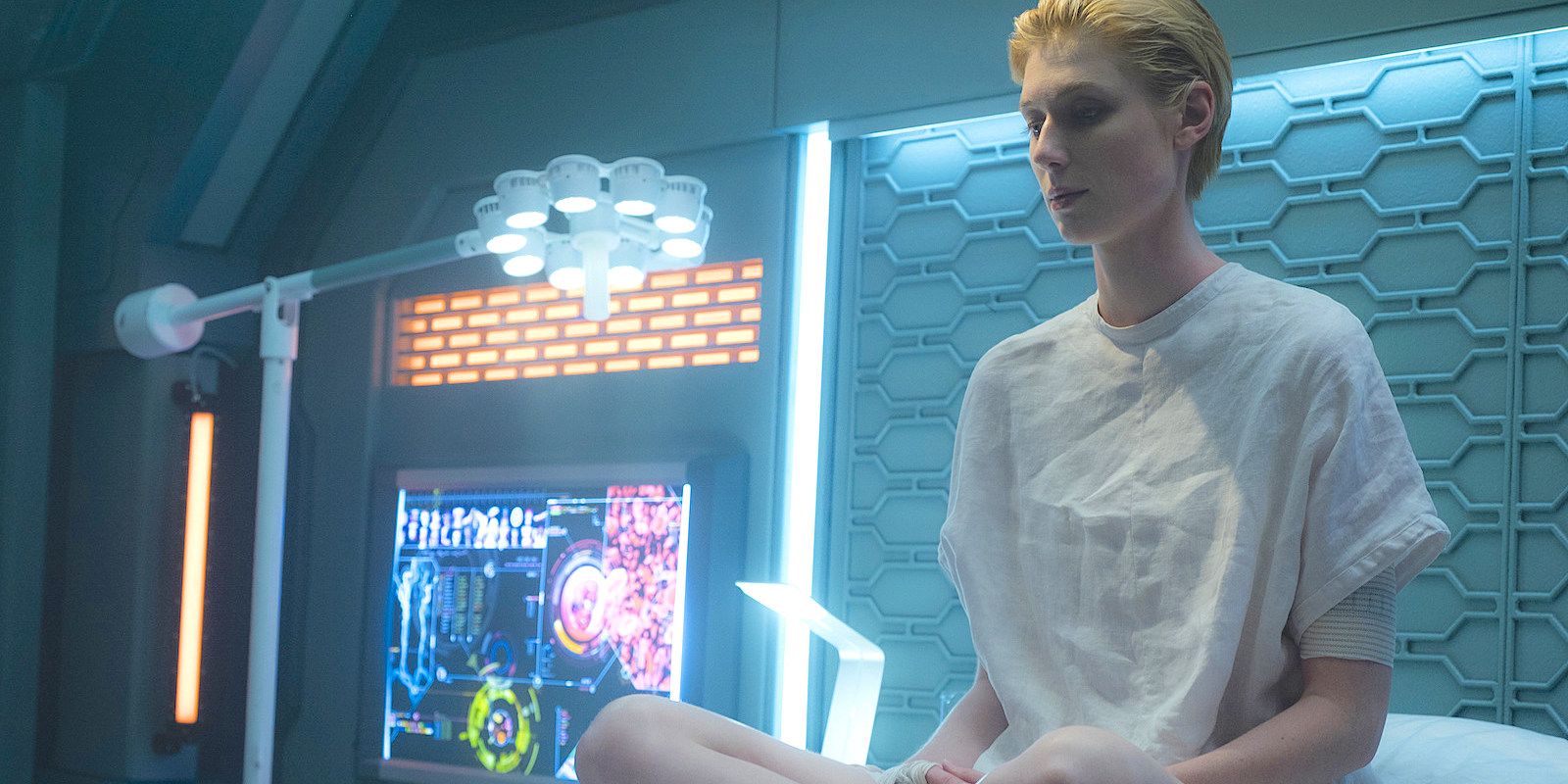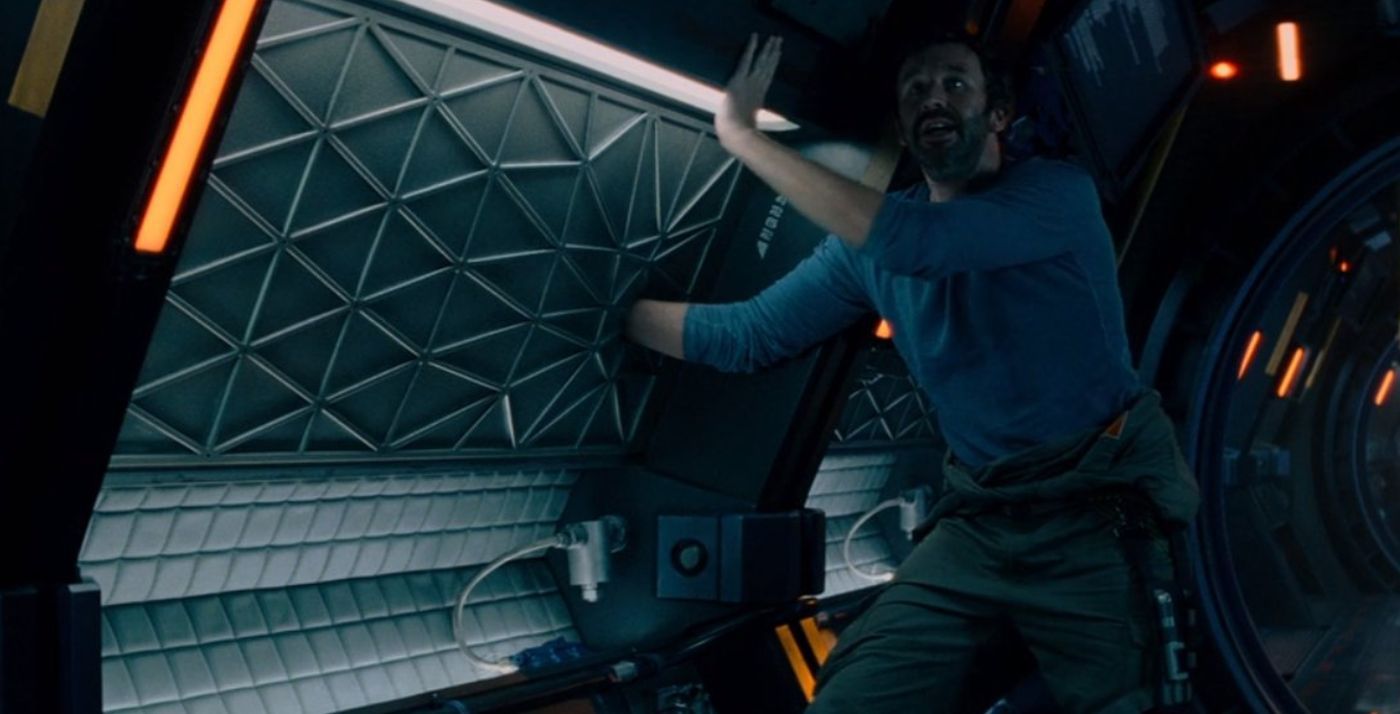If nothing else, The Cloverfield Paradox left a ton of unanswered questions on the table. Netflix’s latest big budget release is a bit of a mess, and it’s getting torn apart by critics. Underwhelming CGI and limited characterization for a talented cast are among the film's shortcomings, but its muddled and at times nonsensical plot is easily its greatest weakness.
The root cause behind Cloverfield Paradox's sloppy storyline seems obvious: during production, producer JJ Abrams elected to completely rework the film (then known as God Particle) in order to fashion it into an entry into his ongoing Cloverfield franchise. While we can't say that God Particle would have been a hit if it had been left alone -- we got a look at the original script, and it's arguably worse than what we ended up with -- but shoehorning an alternate dimension and an monster invasion into a space station murder mystery definitely complicated things to an unnecessary degree.
Related: How All The Cloverfield Movies Connect
As it stands, Paradox's attempts to tie into the Cloverfield universe don't end up making a ton of sense. And by the time the credits start rolling, audiences are left with a lot of questions and very few answers. Read on to see The Cloverfield Paradox's Biggest Unanswered Questions.
Are These Alternate Dimensions Or A Screwed Up Timeline?
Heading into Paradox, most fans were under the impression that it would serve as a prequel of sorts to the original 2008 film Cloverfield, one that could potentially explain where the franchise's giant monsters hailed from. But since Paradox takes place in 2028 -- in the midst of an energy crisis that was definitely not happening in the original film -- that's out the window, right?
The alternate dimension aspect of Paradox makes that a difficult question to answer. The franchise's increasingly muddied timeline implies that the particle accelerator's tearing of space-time not only warped the crew of the Cloverfield Station into another dimension, but was also somehow responsible for transporting the monsters onto Earth. Or something like that.
But that all goes down in 2028, so where do the events from 2008 fit in? Did the particle accelerator send Clovers to the past as well? Has the original film been retconned, or does it possibly take place in yet another alternate dimension? Honestly, we have no clue, but all this time-travel talk is making us dizzy, so we're going to move on.
Why is the Cloverfield monster so much bigger?
Again, Paradox sort of provides an explanation for the monster's origins, but it's vague at best. We only actually catch a glimpse of a Clover twice during the film. Hamilton's husband Michael spots the silhouette of the beast near the halfway point, though it's tough to say how big that Clover is. The monster that pops up out of the blue in the film's closing moments, however, undeniably dwarfs anything we've seen before.
The original Clover from the 2008 film was said to be 240-300 feet tall. A massive beast, no doubt, but not one capable of poking its head through the sort of heavy clouds glimpsed in the final scene. (We're definitely not meteorologists, but the clouds that Paradox's Clover pops up through appear to be pretty high up there, possibly thousands of feet in the air.)
Is the Paradox Clover simply a fully-grown version of the other monster, or is this some sort of giant, queen Clover? Could the particle accelerator have had an effect on its size? Your guess is as good as ours.
How Did Worms And The Gyroscope Get In Volkov?
Of all the crew members of the Cloverfield Station, Volkov definitely drew the short straw. After the particle accelerator goes off and transports the crew to the alternate dimension, the Russian's body suddenly became home to not one but two seemingly misplaced objects: the ship's colony of worms and its navigational gyro. How or why the worms and the gyro are introduced to his system is never made clear, nor is his abrupt turn to outright antagonist who crafts a gun out of a 3D printer to solve his problems. Perhaps he was compelled to do so by the worms...somehow? We're still not too sure who he was supposed to be speaking to when he was checking his eye out in the mirror.
The worms were likely introduced just to add a scare or two to the proceedings, but with no explanation given for their disappearance, reappearance, or purpose on the ship, its all a bit flimsy.
Is Mundy's Arm Sentient?
Okay, Volkov may have drawn the short straw, but Mundy's wasn't much longer. When the ship suddenly springs to life while Mundy is attempting repairs, it snatches his arm clean off, leaving him with a painless stump that defies explanation. The missing appendage later reappears and proves to be pretty useful, informing the crew members of the location of the ship's missing gyro. The ship isn't satisfied with just taking the Irishman's arm, however, and it outright eats him alive later on for no apparent reason.
But wait, let's back up for a second. How did Mundy's arm know about the gyro? How is the arm operating autonomously at all? As little sense as it all made, Mundy's arm still made for one of the more entertaining sequences in the film, so we're actually willing to let this slide completely.
Why was Jensen the only member of her crew to make the jump onto the Earth 1 station?
Elizabeth Debicki's Jensen is definitely a standout amongst the cast; she probably provides the film's second strongest performance, behind that of Gugu Mbatha-Raw as Hamilton. The mystery of Jensen is so far-reaching that you almost forget to ask arguably the most important question: umm, where's the rest of her crew?
When the Cloverfield Station is transported to an alternate dimension (which we'll call Earth 2), it apparently takes out that dimension's space station, which is seen having crashed down into the ocean on an Earth 2 newscast. All six members of that station's crew are presumed dead, but then Jensen just sort of shows up inside the walls of the Cloverfield Station. So why does she survive (albeit barely) but not the others? Was Jensen's crew aboard the crashed ship, or were they simply wiped from existence?
Was the ship possessed by a demonic force?
Truth be told, next to nothing that happens in The Cloverfield Paradox makes a ton of sense. Earth 2's dimension basically eats the Earth 1 crew alive at random, for reasons that are not readily apparent to us. Somehow along the way, monsters are transported to Earth 1, but perhaps not Earth 2, as the news broadcasts make no mention of the Clovers, instead focusing on a 14-month-old European war.
Tears in the fabric of space-time serve as a weak rationale for some of the film's events, but they don't really explain the ship eating Mundy's arm, nor do they explain his death (or Tam's, for that matter). The ship being possessed by some sort of demonic force kind of would, though, so...sure, yeah, let's go with that. The Cloverfield Station has a demon onboard. Open and shut case, the end.
Perhaps it was Mundy who summed it up best. After losing his arm, he looks to soften the insanity of his follow-up 'will it grow back?' question by saying, "I...don't know the rules anymore..." Neither do we, Mundy. Neither do we.

